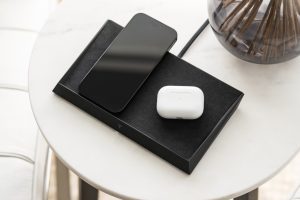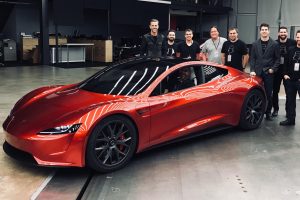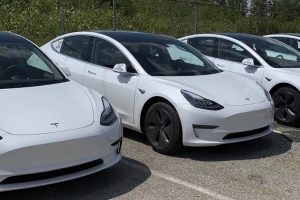One argument that often comes up against Tesla and Elon Musk is that they “own child slaves” or “own slave labor.” I’ve seen those in my notifications quite often (and randomly, too). But the fact remains that neither Tesla nor Elon Musk owns slaves, nor do they support slave labor or child labor. This myth is silly, yet persistent.
In a move to ensure transparency, Tesla is developing a blockchain platform that will allow users to track what cobalt it does get from the mine to the battery. Benzinga reported that Tesla is working with a consortium of cobalt producers to develop the blockchain. You may remember the detailed 2020 Impact Report that Tesla released earlier this month. In that report, Tesla said that it’s working with the Democratic Republic of Congo-centric Re|Source consortium.
The consortium is made up of China Molybdenum Co., Ltd, Eurasian Resources Group, and Glencore. The goal of the platform is to create a “transparent, open, and global registry” tracking the cobalt and ensuring its sustainability. It will also help in the tracking of its provenance at the unit level.
Tesla added that the pilot program is being executed in “real operating conditions” — from cobalt production sites in the DRC through EV production. Its goal is to make sure that all of the cobalt it uses in its products is sustainably sourced while also creating a way for users to account for and verify this. The company also noted that the blockchain is designed to be “readily accessible and inclusive to all parties across the supply chain and is scalable.”
The latter means that it can also include other critical battery materials in the future. Once it is completed, the system will allow users to fully track the cobalt as it is mined, shipped, and used in Tesla’s products. The pilot program is slated to run until the end of this year and the full rollout is planned for 2022.
BHP Blockchain Collaboration for Nickel
One key partner of Tesla’s for this project is BHP Blockchain. Tesla and BHP will collaborate to improve the supply chain’s transparency while assessing various sustainability criteria for nickel. Tesla traced nickel shipments over a three-month period from BHP’s Nickel West operations in Western Australia through the various transformation phases and up to the vehicle production at Gigafactory Shanghai.
Tesla noted that the program supports its supply chain’s due diligence product provenance and also confirms if any raw material dilution occurs in the supply chain. Due to the digital nature of the blockchain, scalability of the technology is can be enabled and Tesla is able to track its CO2 footprint for its vehicles.
“The pilot also enabled us to identify potential inefficiencies in supply chains and suggest pathways for improvement. All the initiatives described above will contribute to Tesla aligning with regulations incentivizing transparency, traceability, and sustainability across the battery supply chain, including through clear external communication with relevant third parties,” Tesla said in the report.
Tesla Cares About Human Rights In Its Supply Chain
In another section of the report, Tesla emphasized the importance of human rights issues in its cobalt supply chain. Tesla has a due diligence program and it conducts a country-of-origin inquiry for all of its supply chain to ensure that it’s in line with the OECD Due Diligence Guidance for Responsible Sourcing from Conflict-Affected and High-Risk Areas (OECD Guidelines).
Tesla also requires that all of its suppliers, sub-suppliers, and mining companies in its supply chain follow Tesla’s Code. This includes taking a proactive approach to reducing environmental and resource impacts. All of Tesla’s suppliers are required to follow its Code of Business Conduct and Ethics. You can read that full document here.
Another Way Tesla Is Increasing Its Cobalt Supply’s Transparency
Along with the blockchain that will allow users to track cobalt from mine to battery, Tesla collects detailed data from relevant suppliers using the RMI Cobalt Reporting Template. This is a free, standardized reporting template that was developed by the Responsible Minerals Initiative to identify choke points and collect due diligence information in the cobalt supply chain. You can learn more and even download the template here.
“Because Tesla recognizes the history of human rights issues within cobalt supply chains, particularly in the Democratic Republic of the Congo (DRC), we have established processes to prevent these risks in our supply chain. We also recognize that mining conducted in a responsible and ethical manner is an important part of the economic and social well-being of those communities. We review all information provided by our suppliers for red flags and risks associated with ethical sourcing. Where we can be assured that minerals, including cobalt, are coming from mines that meet our social and environmental standards, we will continue to support sourcing from the DRC and other regions,” Tesla stated in the report.
Let’s Put This “Elon Owns Child Slaves” or “Tesla Owns Child Slaves” Myth To Bed Once And For All
In order to put the above myth to bed, we need to look at where this myth came from, analyze the kernel of truth (all myths have some aspect of truth to them), and figure out what’s actually true and what’s not so true. First, we know that if Elon actually owned any slaves, it would be all over the news and he’d be prosecuted. Same thing with Tesla.
The myth seemingly started in a 2019 article by Reuters that stated that both Tesla and Apple were accused of aiding child labor in Congo. The truth is that Tesla was accused of this. The legal complaint was on behalf of 14 families from Congo and was filed by the group International Rights Advocates. Google, Microsoft, Apple, and Dell were also named.
Looking back over the years, we can see that Tesla has taken a stance in favor of human rights and has done its own due diligence to ensure that its supply chain does not contribute to child labor in Congo. Also, there’s a bit more to add. During Tesla’s 2020 shareholder meeting, Terry Collingsworth, a member of the IRA, shared that it was his team that brought that lawsuit against Tesla.
He accused Tesla of “tolerating the death and maiming of young child miners” and wanted Tesla to provide additional reporting on human rights (Proposal 7). That proposal was voted down, but looking at what Tesla is doing to increase transparency, Collingsworth and the IRA may have gotten what they wanted, and this is an excellent thing.
However, there is more to this story. I mentioned Glencore as being one of the partners Tesla is working with to develop the blockchain. Glencore owns one of the mines that does have a problem with child and slave labor. Although, reportedly, it’s not Glencore’s fault. What wasn’t really reported was that Glencore had been in a legal battle to get one of its mines back (the mine linked with child and slave labor) from artisanal miners who use both. The mine, the Tilwezembe concession, has been overrun by artisanal miners since 2011. So, Glencore “owns it,” but doesn’t have control over it — if we have all our facts right on this.
Now we see where the myth of Elon/Tesla owning child slaves comes from. And we see the solutions that Tesla is implementing to create transparency for its cobalt supply chain, and that of other minerals as well. Time to turn off the lights and put this myth to bed.





